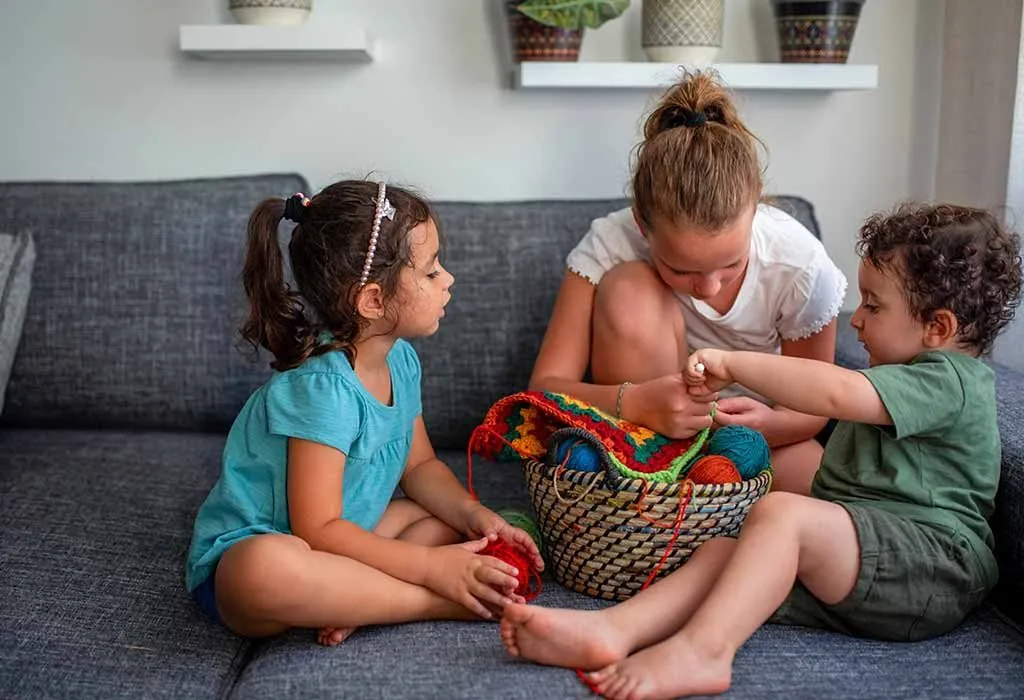
Quite the opposite, crochet is for everyone, and it’s a great activity you can share with your children. I taught my husband’s cousin, who now makes cute stuffed animals and scrunchies. He found it fascinating, and our grandmother marveled at how well he did. You can share it with your family, too. If you don’t know how already, it can be great to learn with your children to let you have something in common that you enjoy.
When getting started with crochet, you’ll need a hook, yarn, scissors, and a needle for weaving in your ends (all crocheters hate this, but if you don’t do it, your project will come apart). One tip I always tell people is to check a superstore if you don’t have a craft store near you. They usually have hooks and yarn, so you can still get what you need. Some dollar stores are even coming out with supplies now.
When I learned, I found that metal hooks were great, but I liked plastic ones better for two reasons. The first is that depending on the yarn you’re using, a metal hook can sometimes catch, and the second is that the plastic hook was easier on my hands, and I could crochet longer.
Find The Yarn That Works For You
While some recommend big bulky yarn for beginners to see their stitches better and have an easier time, sticking with something simpler, bulky yarn can be harder to learn, and depending on the thickness and your first project, you can get extremely frustrated. Remember, your child probably has less patience than you do, so starting with something easier might help them retain interest much longer. I learned on Red Heart, and it worked just fine for me, but if you need a thicker yarn, you’ll find that any crochet store has it.
I’d also recommend watching YouTube when you’re starting. Patterns (even the simplest ones) can be complex when starting. Watching someone move their hands and adjust the yarn slowly will be a big help, especially if you’re left-handed. I’m a right-handed person, and my husband is left-handed. I eventually guided him to YouTube because while I was explaining the fundamentals of crocheting, he had difficulty with placement and movement. He understood after two or three videos, and his hands flew.
I cannot stress this enough. Many people come into crochet thinking they will make the cardigan or plushy they saw on social media. While it is possible to do that (eventually), it’s hard to do that on your first tryout. I recommend sticking with a single crochet for your first project, as it’s the easiest stitch. With that stitch, I learned how to do washcloths, blankets, and more. Then, when you learn to go around in circles, you can do plushies and much more. But you’ve got to start small and set realistic goals, or you might end up with nothing but frustration. However, if your child wants to go big, you can still let them. Just remind them that it will take longer and require more patience because it takes longer to learn different stitches.
What It Teaches Your Children
Not only is crochet a great activity to keep your children focused and entertained and teach them skills like problem-solving, but it also teaches them to be creative, learn patience, and use their imaginations. The sky is the limit when it comes to projects. Not only that, it’s believed that crochet also offers fine motor development skills. Many families feel that crochet brings people together and keeps them together. It can be a great way to bond and connect with your family.
A personal story of mine is that my mother crochets. She taught me as a child, and I forgot how. But when my husband was deployed, his mother re-taught me. Now, my mother and I crochet together and go to craft fairs together, while my mother-in-law constantly gives me great ideas on what to make and offers encouragement. It has genuinely made me feel much closer to both of them.
Checking your local shops will also be a great way to learn and spend time together. It’s so fun picking out the yarn together and then deciding what project to use it on. Not to mention that everyone in knitting and crochet shops is so lovely and helpful. They can give you great advice and valuable suggestions on what to make. When it comes to local shops, the yarn is always of excellent quality, and many have the ‘fancy’ yarn you want to save for special projects. It’s a great way to bond over indeed learning as a family. I’ve had so many family members want to know, and it’s a great way to feel closer to them.
Have Fun!
Learning to crochet can be a great way to bond with your family and something that they take with them to adulthood. The best part is that you have beautiful memories and a legacy that won’t be forgotten.

Jenifer Dale is a writer that has a passion for reading and helping others. When she is not writing, she loves cooking, crocheting, and spending time with her family.
